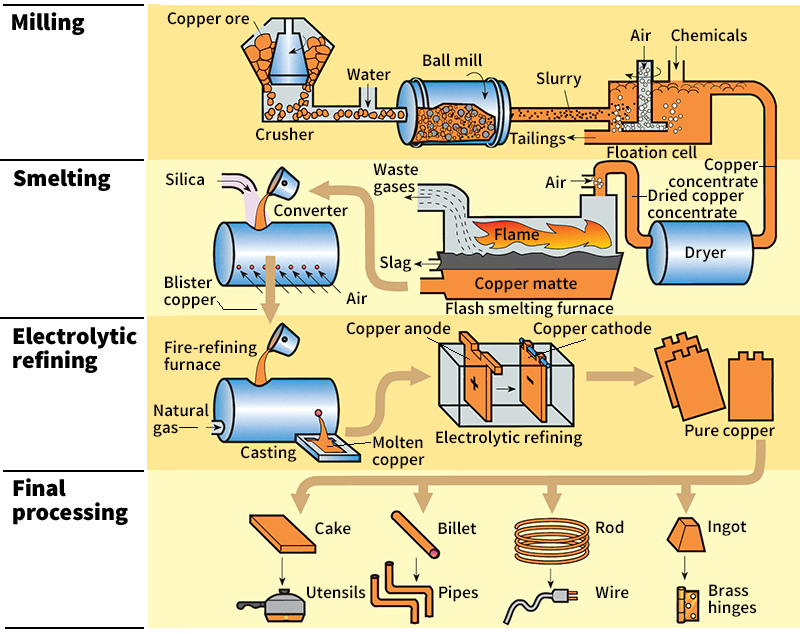Smelting is a method by which metals are taken from their original ore or by which scrap metal is improved for recycling. Smelting is done in specially built furnaces. A smelting furnace for making pig iron is as tall as a 10-story building. Iron ore, coke (fuel from coal), and limestone are fed through the top of the furnace. Hot air is blasted into the bottom. The hot air burns the coke and generates the gases and heat required to produce molten iron from its ore. Slag is also formed by a reaction of the limestone, removing unwanted components from the ore (see Slag ). Molten slag and iron are removed through openings in the bottom. Industry uses similar types of furnaces to smelt other ores to produce copper, lead, and ferroalloys (mixtures of metals containing iron).

The recycling of scrap metals by smelting is called secondary smelting. It requires less energy than the smelting of ores and produces less slag. A reverberatory furnace is commonly used to recycle scrap metals, such as copper and aluminum. Flux materials are added to separate unwanted components, creating slag. Alloys are added to make a variety of useful metals.
In both normal and secondary smelting, the molten metal product is poured into simple molds where it cools and solidifies before being sold to industry. The furnace slag is removed and is often recycled into such products as concrete. Pollution control systems handle furnace emissions of gas and dust. Iron and steel scrap metal can be directly recycled without the need for secondary smelting.
